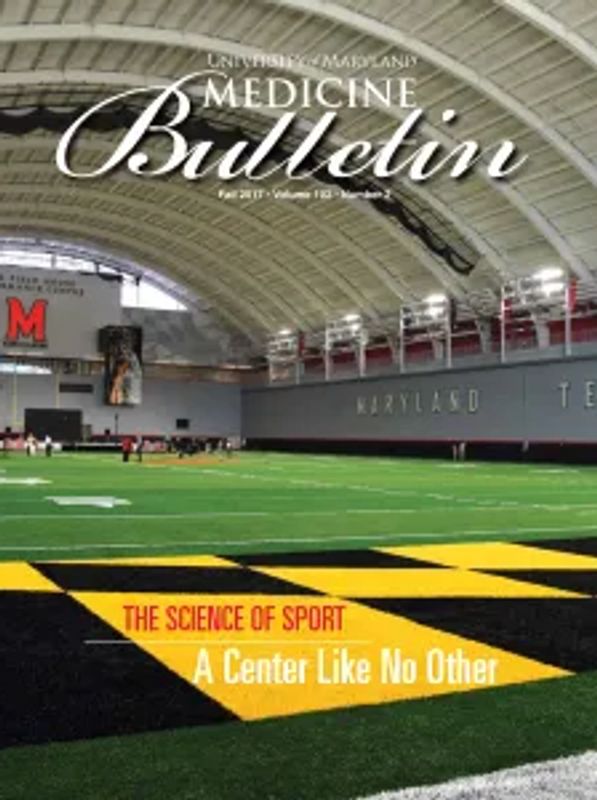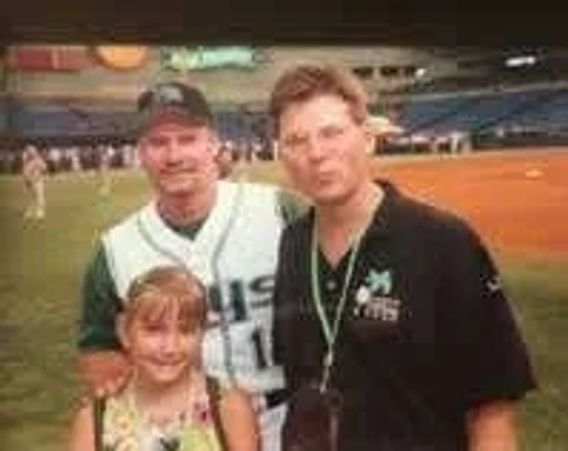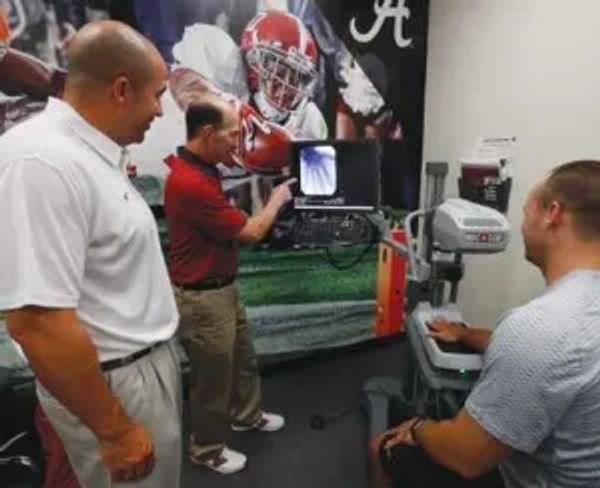The Team that NEVER Loses!

Flashback 37 years: Four young men are among those who arrive at Maryland as first-year medical students. It isn’t long before these particular students find common ground among them-sports. At that time of year, competitive conversation probably turned to football, then to basketball, baseball, and more.
Therein lies the beginning of lifelong friendships, professional collaboration and mutual regard with an emphasis on sports as each of the friends found a way to pair his chosen medical specialization with his love of a specific sport.
Stephen Anderson, ’84, radiology and team physician for the Tampa Bay Rays, grew up wanting to have some professional part in baseball. “I loved the game, but knew I would never be a player.”
Anderson recalls being grateful for Maryland’s radiology rotation and elective that many schools were offering. It was when he had a chance to observe Hopkin’s involvement with the Orioles that he began to think specifically of sports radiology.
(The Team that NEVER Loses! By Rita Rooney)

The Team that NEVER Loses!
He is now celebrating 21 years with the Tampa Bay Rays. Every draft pick goes through an exam by him. “Of all sports, baseball is probably the most demanding physically,” he reports. “Players go through a rigorous examination to make sure they are fit.”

He recalls one time he had the responsibility of calling a doctor for the Red Sox to tell him whether or not a player could compete in the World Series. More recently Anderson was busy- in the wake of Hurricane Harvey – when the three-game series between the Houston Astros and Texas Rangers was moved to Tampa. Tickets sold for $10.00 each and all proceeds went to flood relief.
Anderson has two daughters who when they were younger, went to many games with him. “The players would throw balls to them and it became so frequent that they expected it. To them, it was a part of watching the game, possibly the part they liked most,” he says.

Urologist specialists, Brad Lerner, ’84 was assisting with registration for his 30th class reunion when he noted that three of his good friends as medical school classmates would be on hand for the evaluation. Each enjoyed a professional association with a major sports team including the Oakland A’s, Tampa Bay Rays and the University of Alabama football team. This was in addition to Lerner’s own position as urologic consultant for the Baltimore Ravens.
Lerner says he once entertained the idea of sports medicine as a specialty, but says his ultimate choice of urology has played an important part in football, even though the young age of players might suggest otherwise.
As urologic consultant to the Ravens, Lerner tells of an event that occurred when during an away game, one of the teams to defensive players developed severe pain on the plane probably due to altitude change. The plane was diverted to a competitive team’s city, the player was seen by that team’s physician and was diagnosed with a severe kidney injury, with a recommendation that he sit out the rest of the season. The player returned to Baltimore and saw Lerner for follow-up evaluation and conservative treatment. “We were able to get him up and back on the field in six weeks, wearing protective jacket,” Lerner says.
As spectators, he and his entire family are among the team’s most ardent supporters. As team consultant, he is required to be available during each home game. He doesn’t sit on the sideline as do many team physicians, but he is typically present at the event or immediately available by phone should he be needed.
There appears to be some question of whether the class of ’84 athletes formed a basketball team, or whether they just played without the formality of team name or option from another team. What each of them does recalls is that the top floor of one of the university’s unheated parking garages was used as a basketball court in fair as well as frigid weather. Whatever the season, members of the group remember their basketball sessions as welcome relieve from the pressure of the studies, as well as time well spent in building the kind of friends that last a lifetime.

Martin Schwartz, ’84 had an association with the Washington Redskins and Toronto Blue Jays before becoming team radiologist for the University of Alabama football team. He reports that the group of sports-loving students who remain friends today bonded early, as do like-minded people with similar interests. “We were all highly-driven and competitive,” says Schwartz who has a private practice. “I think that strengthened our goals more quickly as well.”
According to Jeff Allen, head athletic trainer for crimson tide football, Schwartz has a level of commitment that has made a positive difference in the school’s medical decisions. “There is no doubt Dr. Schwartz has improved the effective performance of our team.” Allen says.
Schwartz looks back to his medical school days and remembers the camaraderie he and his friends shared playing basketball in the bitter cold garage, and ashing the highs and lows encountered by their favorite teams.
“I grew up rooting for the Washington Senators,” he recalls. “If I thought I’d have to put sports on the back burner in medical school, I was wrong.”

As a surgeon in private practice, John (Tad) Schwartz, Jr., ’84, has specialized in hand, elbow and shoulder surgery in California’s Bay Area- a practice that ranges from children’s sports-related injuries to professional athletes. His patients have included those from the Oakland A’s and Raiders to the San Francisco 49ers and University of California Berkely Bears. Ted Schwartz Refers to Medical school as a “special time in life. We were a close knit and hardworking group that has formed long lasting and solid friendships.”
His medical school roommate, Anderson, predicted Schwartz would become a surgeon . “It was pretty clear from the way he took his car apart every weekend,” Anderson recalls.
The amusing anecdote is typical of the bond that exists today amount these men. Still in tune and in touch with each other, they are quick to recall such incidents. Each is quick to remember the basketball games in a freezing Campus garage. More than that, though they may not have realized it at the time, their shared friendship may ultimately have become part of the kind of doctors they have each become today.
“Medical school was a special time for all of us, ” Lerner recalls, speculating that it may say something about the impact of sports on American lives. Perhaps even more, it reflects the kind of friendship that exits among Maryland alumni and the camaraderie of a team that never loses.
Copyright © 2023 Anderson Radiology - All Rights Reserved.
Powered by GoDaddy
This website uses cookies.
We use cookies to analyze website traffic and optimize your website experience. By accepting our use of cookies, your data will be aggregated with all other user data.
